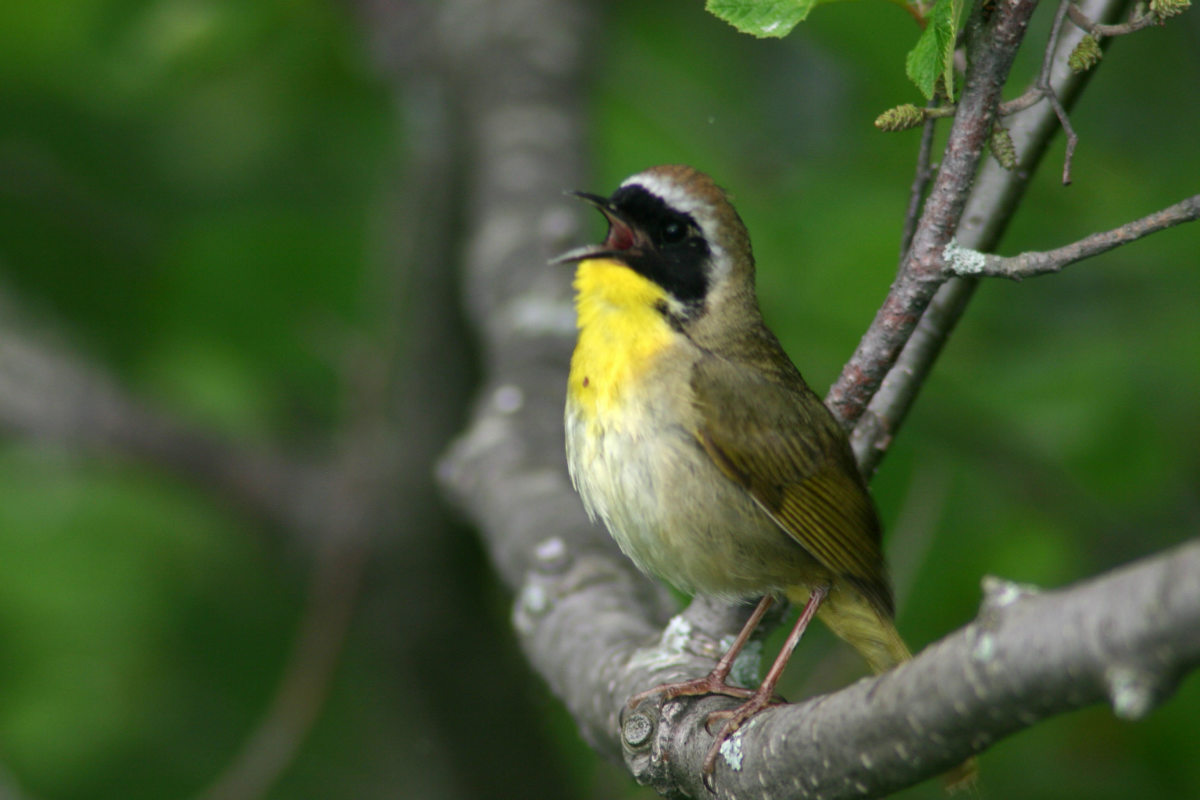
Common Yellowthroat singing on an alder branch (Photo credit: Chris Kolaczan)
A new method of monitoring bird populations uses the power of statistics to produce more accurate estimates of bird abundance, according to new research by University of Alberta biologists.
Current tools and technology for monitoring bird populations tends to underestimate the number of birds in a given area. This is, in part, because these tools do not always account for changes in bird calls over time-over the course of a single day or an entire year. Accounting for these changes better models bird behaviour, and produces more accurate results.
"Early in the season, everyone sings like crazy to find a mate, while later in the season birds are busy nesting or feeding their young," explained Péter Sólymos, research associate in the Department of Biological Sciences and lead author on the study. "Likewise, some birds sing in the morning, and not in the afternoon, while some individual birds sing more than others of the same species. Accounting for this variation is the key to getting accurate population estimates."
Spotting singing songbirds
The new model was applied to bird count data for 152 species from the Boreal Avian Modelling Project which covers a vast area of Canada, Alaska, and the northeastern United States. The scientists found that incorporating variation in birds' singing behavior improved models' accuracy-how likely birds are to sing changes over the course of the day and the year, affecting how easy they are to detect.
And accurate population modeling is the first step to understanding the risks that endangered and at-risk birds face. "Because many of these songbird species are declining, it's important to be able to count and track their populations more precisely," said Sólymos. "Armed with this information, we can begin to identify the causes of decline and hopefully reverse them."
The paper, "Evaluating time-removal models for estimating availability of boreal birds during point count surveys: Sample size requirements and model complexity," is published in The Condor: Ornithological Applications (doi: 10.1650/CONDOR-18-32.1).